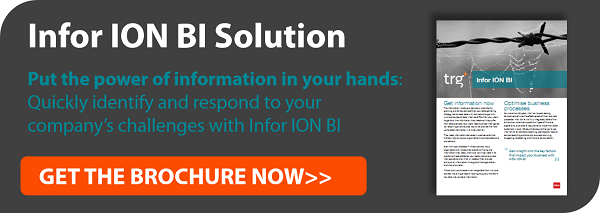Business intelligence is always known as the tools, technologies, methodologies and best practices that help organisation have insights information on their business. BI helps organisations to have a clear view about their data to make better decisions and push the business process forward. In our previous posts, we discussed about the rising needs for business insights and how to correctly operate a BI platform to improve business performance. However, the business world is changing constantly; therefore corporation needs to have flexible business strategies to go along with the waves while still preserving its image and position in the market. Consequently, the implementation of BI is also challenged as BI solutions are one of the key factors that help businesses to stay competitive.

Understand business needs
Surprisingly, one of the biggest challenges companies have to face when implementing BI solutions lies within the organisation. How do you enable cross organisation collaboration? How do you connect and engage business sponsors? How do you establish and preserve your top priorities? How do you determine the right teams and put them into places? Your BI solutions should have the ability to help you to have full control on your data and information to produce top performance, which includes:
- Developing and aligning the corporation’s mission, goals and priorities with its vision
- Directing business drivers according to organisational needs and capabilities
- Determining future opportunities to create business value
- Analysing common business pain and obstacles to develop comprehensive solutions for the problem
- Appraising organisational and technical readiness
- Developing relevant business driven plans
- Establishing and communicating the strategic direction and identifying program sponsor for it
- Setting up the initial return on investment justification
Understand your organisational needs and its top-priorities will help you comprehend your business’s disadvantages, and from that you will know exactly what you need to implement your BI solutions for.
Effective control of data
After organisations understand its needs to develop a clear roadmap for its BI to run, the next challenge you encounter will be more technically involved. How to develop a solid, well-planned architecture foundation to manage the exploding user base, the increasing data volumes, different data types as well as the integration of new data sources effectively? Many BI-implemented companies have their system evolve organically but eventually they cannot advance their BI system to a certain point because they have not establish a platform that’ll help them to manage their performance, scales and the adaptability to the future needs. Hence, the process to establish a BI solution that could help organisation to overcome these challenges should include:
- Create conceptual models to support the business requirements to architectural capabilities based on organisational needs and objectives.
- Identify business gap by mapping current capabilities and the conceptual model together and fill the gap.
- Identify the best-practice company applying architectural solution that helps them address their business needs and requirements.
- Clarify the key entities, tools and technologies for the initial stage and the minimum requirements for the whole project
- Add details to the ROI plan to as to prepare for moving forward.
As data is valuable asset that can be turn to critical information, it is important to analyse the data carefully and effectively in a short time. However, since the number of daily data you need to analyse is incredibly huge, you should know how to use your BI solution to make the process easier and simpler.
Leverage data into information
The next hurdles for organisation to overcome after identifying strategic objectives and tactical components are controlling the costs to meet the return on investment justification, quickly creating business value, guaranteeing target delivery dates as well as managing the shifts between priorities and business needs. The best way to overcome these challenges is to establish a BI program that can fully manage the whole process. In order to do that, you should:
- Establish program governance by developing a management team, protocols and charter.
- Build high-level and iteration-based program based on organisational priorities, implementation time and value time.
- Identify the scope, deliverables and success criteria for each iteration
- Plan and determine the estimated costs and resources required for the initial and subsequent iteration.
- Communicate the plan and check for approval from the higher management board to start the implementation process.
Translate strategy into action
After identifying the key factors as well as building up plans, organisations have to translate those information and strategy into action. The implementation process need to be align with the organisation implementation cycle regardless of whether it is agile, waterfall or hybrid.. It is necessary to check these following activities in your managing process on BI implementation:
- Project management and process reporting.
- Detailed solution design.
- Implementation of database, data warehouse and data mart.
- Data integration, data cleansing and data transformation services.
- Extract, Transform and Load (ETL), Dashboard and Report development.
- Train, coach, enable and support end-user.
- Train and mentor support-staffs.
Conclusion
In order to overcome the BI implementation challenges in your business, you need to understand what your organisation needs, and develop a path for the strategic implementation with supports from agile data control and flexible information interpretation. After-check is also essential because this process will enable you to identify the limitations in your BI implementation and eventually find a way to solve them.
About the author
Dominic Sagar - Dominic has over 25 years of professional information technology experience, with 15 of those in a consulting capacity. He has worked to build solutions that solve complex business problem across several industry segments including Retail, Publishing, Healthcare, Telecom, Finance, and Manufacturing. He works with business professionals at all levels of organizations as a strategic business partner, helping them to understand how to apply technology to meet their business goals.
 English
English  Vietnamese
Vietnamese 

